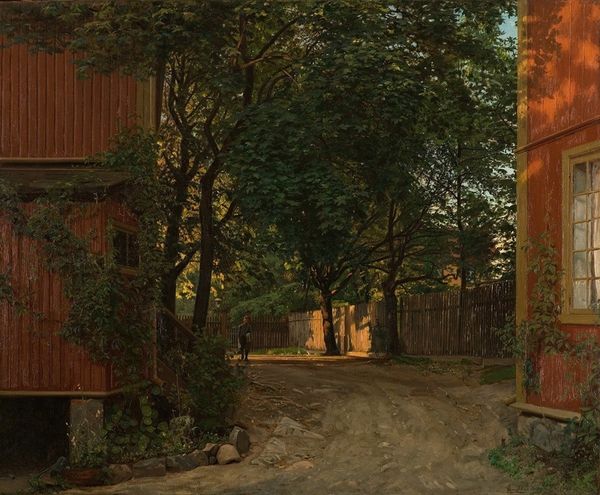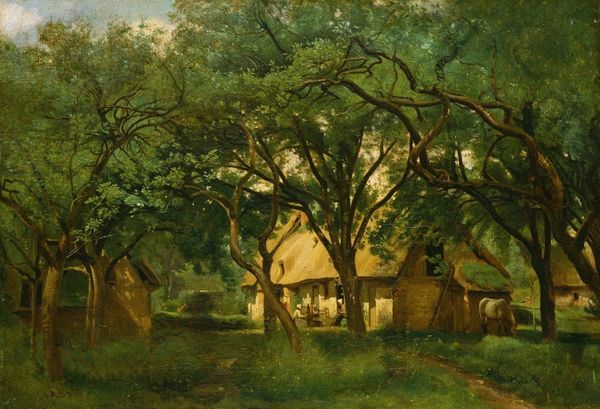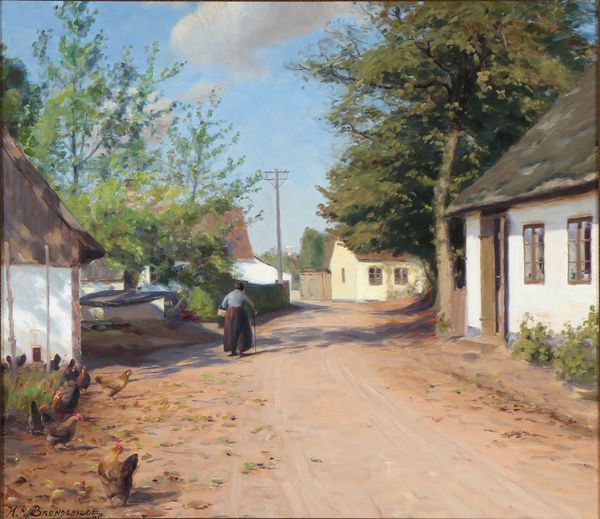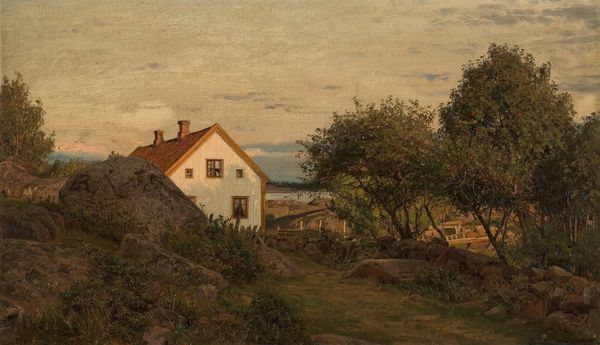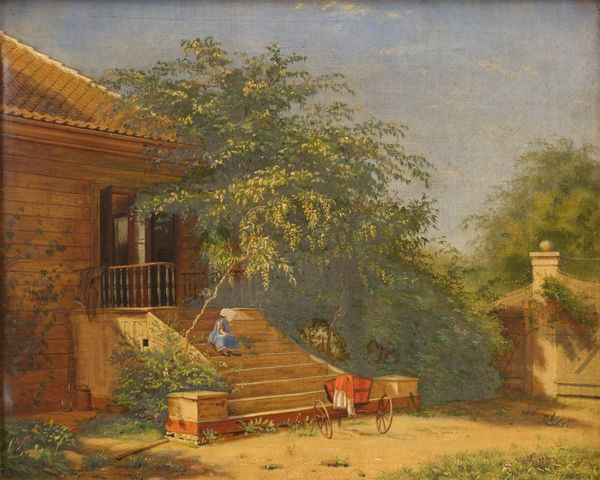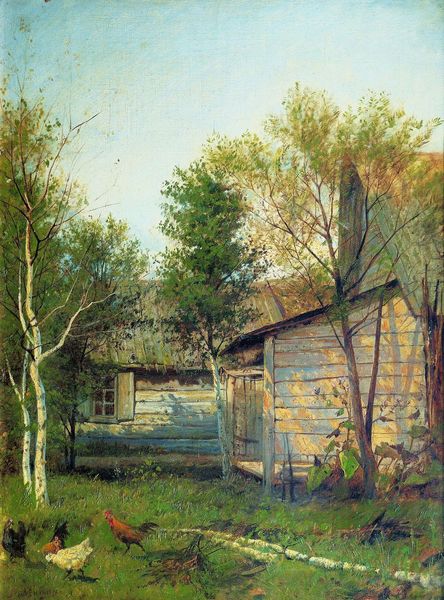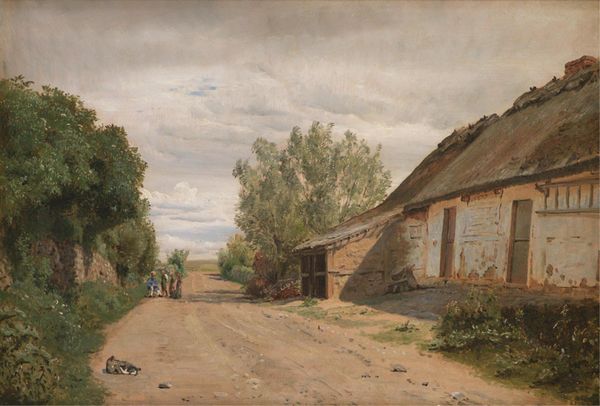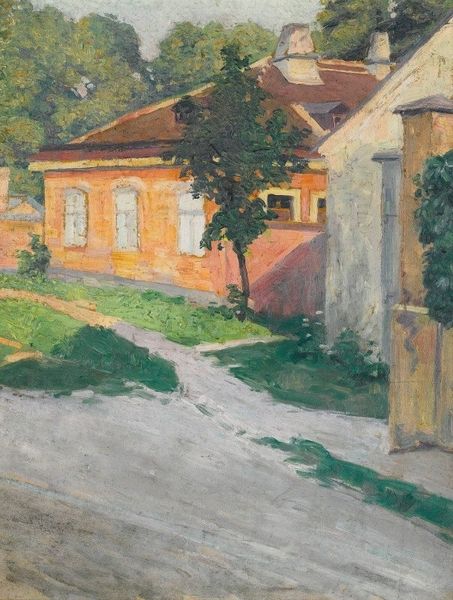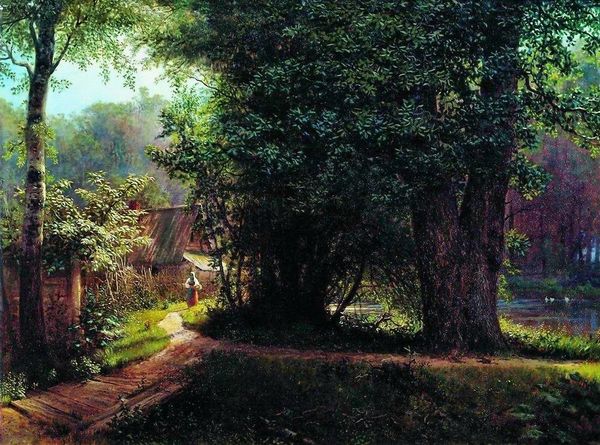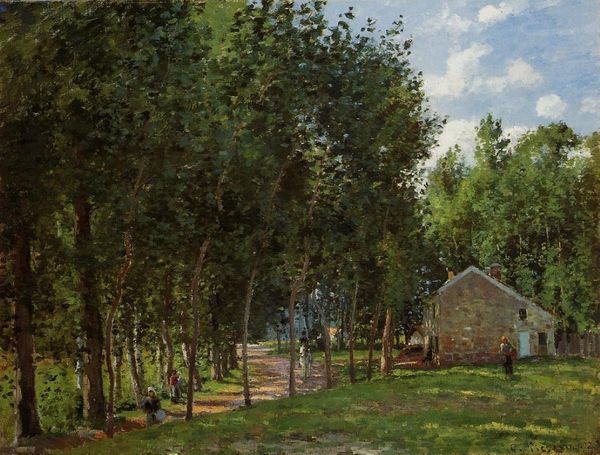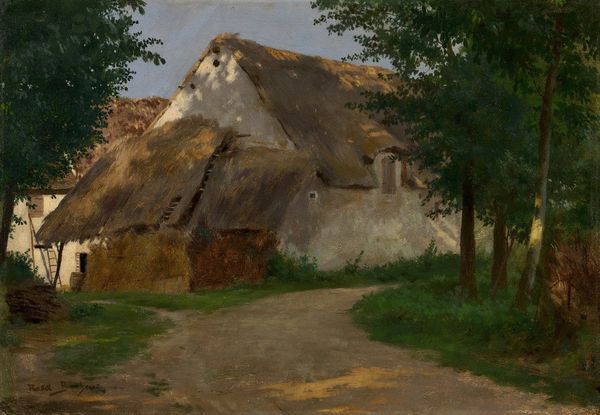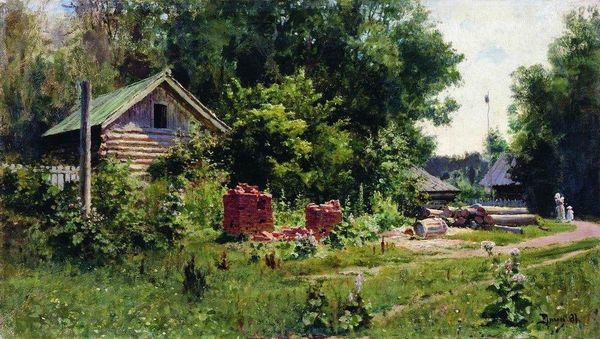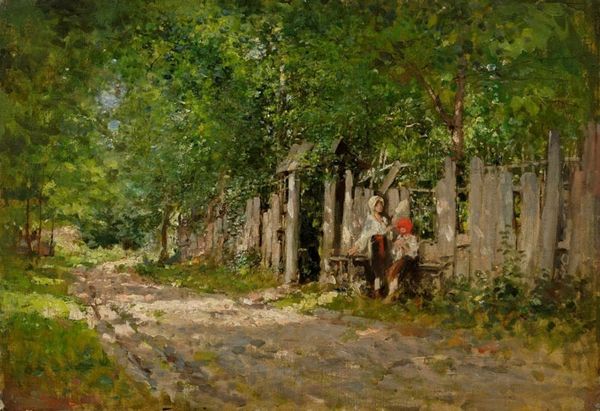
Copyright: Public Domain: Artvee
Editor: So, this is "Morgen, Majorstuveien 8" by Amaldus Nielsen, painted in 1900 using oil on canvas. It's quite striking how the red buildings pop against the green foliage; it almost feels like a stage set. What do you see in this piece? Curator: I see more than just a pretty picture. This seemingly idyllic scene invites us to consider the narratives it subtly obscures. The Majorstuen area of Oslo, even in 1900, was undergoing rapid urbanization. Nielsen, by focusing on these quaint red buildings bathed in morning light, might be engaging in a form of romantic nostalgia, idealizing a past that was quickly disappearing under the pressures of modernization. Editor: So, it’s not just a pretty landscape? Curator: Exactly. Who had access to this idyll, and who was excluded? These wooden buildings likely housed working-class families, their lives increasingly affected by industrialization and the rising cost of living. Nielsen's decision to focus on the aesthetic qualities of the scene, while perhaps visually appealing, risks overlooking the social realities of the time. The single figure walking away seems burdened, yet blended to the background almost symbolically. Editor: That’s a perspective I hadn't considered. It makes you wonder what stories are hidden behind those red walls. Do you think Nielsen was consciously trying to make a statement? Curator: That's the crucial question, isn’t it? Intent is complex and often impossible to determine definitively. However, by analyzing the painting within its historical context, we can explore the possible social commentaries, intended or not, and what kind of conversations this piece sparks when looked at through the lenses of class, labor, and urban development. Editor: I see what you mean. It's fascinating how a seemingly simple landscape can reveal so much about the social landscape of the time. Curator: Absolutely. It highlights the importance of considering the historical, social, and political contexts surrounding artworks.
Comments
No comments
Be the first to comment and join the conversation on the ultimate creative platform.
